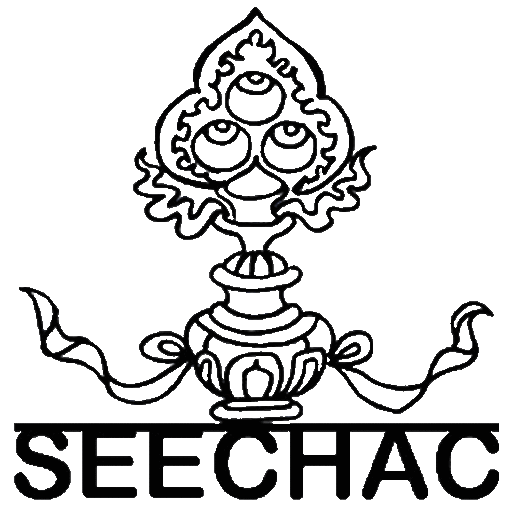Anna-Maria Quagliotti, Vice-President of SEECHAC since its foundation, died in Roma on August 17, 2016 at the age of 70. Members of SEECHAC had a chance to see her for the last time on June 27, when, although already very weak, she came to Paris to attend the SEECHAC annual general meeting she never missed.
She belonged to an ancient Italian family. She did not express any pride for that ancestry nor ever wanted to profit from it. It sufficed for her to be everywhere acknowledged as one of the best specialists of ancient Indian art and South-Asian Buddhist paintings. Her teachers were some of the best Italian scholars and she used to tell how much she was indebted to them, especially to Mario Bussagli and Paolo Daffina. She endend her career as Professor of History of Indian Art at the Napoli University « L’Orientale », one of the most prestigious Italian Universities for oriental studies. The short curriculum vitae she wrote for SEECHAC (https://seechac.org/asso/biblio-anna-maria-quagliotti/) can give an approached idea of her main achievements. She was perfectly fluent in four languages (Italian, German, English and French) and had very often journeyed in Asia (India, Thaïland, Cambodia, Japan). Her favourite subject was the iconography of ancient Buddhist art and Thaï paintings. Her papers and books, which we cannot comment here in detail, stand out by a endeavour to use textual evidence for explaining the puzzling peculiarities of some Buddhist paintings and carvings. She never started from an unicum, but used to make first a complete inventory of all kindred representations of the same personage or the same story. She used that corpus to compare the pictures with the textual evidence she knew fairly well for she had a passion for books, and thus solve the iconographic enigma. SEECHAC members could appreciate the results she thus attained when attending the lectures €they were many – she delivered in Paris.
She loved being in Paris where she had stayed 16 years and had many friends. In recent years she used to celebrate there her birthday, whose date approximately coincided with that of our annual meeting. She could thus bring together her numerous friends for a small party she used to give at that occasion. She enthusiastically supported the foundation of SEECHAC and played an important part in its beginnings. She succeeded in convincing many Italian colleagues to become members. Together with her and our colleague M. A. Polichetti, she perfectly organized the second European Colloquium of SEECHAC, held in 2011 in Roma at the Museo d’Arte Orientale. During her last years, she was deeply affected by the passing away of prestigious colleagues she revered, M. Taddei and D. Faccenna ; the closing of IsIAO (former IsMEO) and its library ; the end of the publication of East and West , the journal where so many of her papers are printed ; the gradual and deliberately planned suppression of oriental studies at her Napoli university and in Italy.
She was outspoken, loved passionately her trade, was extremely generous in every sense of the word, with an extreme discretion, and always ready to offer her warm hospitality even to people she did not know well. She was acknowledged as one of the best specialists of Gandharan art. She played a very important part in the existence of SEECHAC and helped us to build it as a truly European association. We shall terribly miss her.

